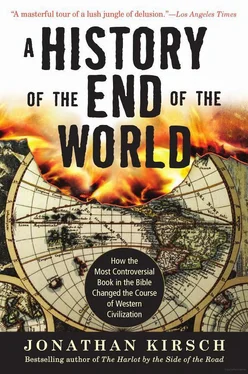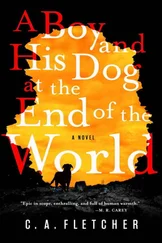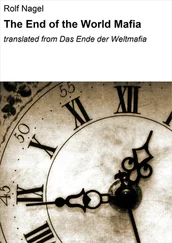A Christian tradition dating back to the fifth century counts ten periods of persecutions by pagan Rome, starting with Nero, “the archetypal persecutor,” in the first century and ending with the Great Persecution of Diocletian in the fourth century. 117To judge from the martyrologies that were composed in the Middle Ages, throwing a Christian to the lions was the kindest and gentlest of the atrocities. And yet, by 1776, Edward Gibbon was already expressing a new frankness on the subject of Christian martyrdom: he counts only two thousand or so victims during the so-called Great Persecution; he insists that many of the martyrs actively and eagerly sought the opportunity to die for their faith; and he questions whether their deaths were, in fact, the occasion for the scenes of Grand Guignol that we find in the martyrologies.
“It would have been an easy task to collect a long series of horrid and disgustful pictures, and fill many pages with racks and scourges, with iron hooks, and red-hot beds, and with all the variety of tortures which fire and steel, savage beasts and more savage executioners, could inflict on the human body,” writes Gibbon in The Decline and Fall of the Roman Empire. “But I cannot determine what I ought to transcribe till I am satisfied how much I ought to believe.” 118
Modern scholars find themselves forced to concede that the persecution of Christians, especially at the time and place of the writing of Revelation, was not nearly as gruesome or as widespread as John suggests. Nero may have been the “beast” of Revelation, but the arrest and punishment of Christians during his reign took place “only in Rome and on a single occasion,” according to George Eldon Ladd, a leading Protestant theologian and commentator on Revelation. 119What’s more, they were arrested and punished on trumped-up charges of arson rather than any specific religious offense. That is why Adela Yarbro Collins calls the episode a “police action” rather than a persecution. 120
During the lifetime of John, and for a couple of centuries afterward, the punishment of Christians by Roman authority remained “local in character or relatively mild in execution.” Domitian, another favorite candidate for the Beast whose number is 666, may have confined his own persecution of Christians, such as it was, to “a few families in Rome.” 121And even then, most of the Christians who fell afoul of Roman authority may have been those true believers who actively sought martyrdom. Indeed, as John himself seems to suggest, it was all too easy for a compliant Christian to escape punishment of any kind by compromising with pagan authority and casting a pinch of incense on the altar fire.
Thus, the book of Revelation must be understood as the work of a man who may not have been persecuted at all but who surely “seems to feel that he is a victim of injustice,” 122according to Adela Yarbro Collins. Nor does John regard the Roman authorities as his only or even his worst enemy. He is equally aggrieved by those of his fellow Christians whom he condemns as insufficiently pure and zealous. He is enraged, too, by the Jews who refuse to embrace Jesus of Nazareth as the promised Messiah despite the urgings of preachers like himself. And it is John’s habit of mind to characterize all of his adversaries, real or imagined, not merely as mortal enemies but as agents of the Devil—a rhetorical ploy that may be his single most enduring gift to posterity.
Of course, John was not the first or only apocalyptic prophet to see the world in which he lives—and all of human history—as a battleground in the war between God and the Devil, a theological notion known as “dualism.” The idea may have seeped into Jewish tradition from the theology of ancient Persia, and it was very much on Daniel’s mind when he beheld the horrors of occupation and oppression under the Syrian king a couple of centuries before John was born. Still, John is forced to offer his own answer to the question that asks itself: What is the proper stance of a faithful believer who is forced to live in a satanic kingdom?
One answer is to pick up the sword and fight. The Maccabees and the Zealots, for example, were willing to risk death in combat against their pagan foes and preferred to take their own lives rather than surrender when defeated in battle. Another answer is to remove oneself from the temptations and afflictions of the pagan world and to live in apart in the purity and isolation of the wilderness. The Essenes, for example, sought refuge in utopian communities like the one at Qumran in the Judean desert. But there was a third answer, and that’s the one that John chooses—to do nothing at all except watch and wait until the end-times, when God will destroy the world as we know it, raise the “saints” from among the living and the dead, and reward them with “a new heaven and a new earth.”
The same range of choices can be discerned in earlier apocalyptic writings. Both the book of Daniel and portions of the book of Enoch, for example, were written during the period of the Maccabean Revolt, but each one takes a very different stance toward the evils of paganism. The Dream Visions of Enoch, one of the apocalyptic works collected in the book of Enoch, seems to endorse the armed struggle of the Maccabees when it depicts the transformation of a lamb, meek and feeble, into a mighty horned ram, “an image for great military leaders and for a warrior-messiah.” 123By contrast, the “wise ones” in Daniel are willing to wait patiently and passively for the archangel Michael to come to their rescue in the end-times, even if it means martyrdom in the here and now.
“They can lose their lives in this world,” explains John J. Collins, “because they are promised a greater glory in the next.” 124
Daniel, rather than Enoch, is John’s greatest influence. For all of the Sturm und Drang of Revelation, John is what scholars call a “quietist”; that is, he teaches his readers and hearers to do nothing about the evil that surrounds them except to keep the faith and keep quiet. To be sure, he envisions a bloody battle between the army of God and the army of Satan—“the battle of that great day of God Almighty”—but it will be a “war in heaven.” At the end of the world, when Rome is finally destroyed, it will be by God’s hand alone: “Rejoice over her, O heaven, and you holy apostles and prophets, for God has avenged you on her!” 125
John, like other apocalyptic writers, seizes upon the lamb as the symbol of the Messiah. Remarkably, a helpless creature that serves as a sacrificial offering in the earthly temple at Jerusalem is transformed in the book of Revelation into a warrior-king in the heavenly Jerusalem. The Roman emperors who serve the Beast “shall make war with the Lamb, and the Lamb shall overcome them,” he writes, “for he is Lord of lords, and King of kings.” The Lamb is armed with an arsenal of celestial weaponry, including “a sharp two-edged sword,” and John promises that the King of Kings will one day bring them to bear in a holy war against the Devil and his minions among whom faithful Christians, John among them, are now forced to live. 126
John, however, does not counsel his readers and hearers to pick up the sword themselves. For the pious and faithful Christians here on earth, John recommends patience and passivity even if it means imprisonment, torture, and death. Indeed, he predicts that Rome will drink itself into a stupor on “the blood of prophets and saints,” but he is instructed (and he instructs his readers and hearers) that a martyr’s death is something earnestly to be wished for: “Then I heard a voice from heaven saying to me, Write: ‘Blessed are the dead who die in the Lord from now on.’” 127
Revelation is, among other things, a revenge fantasy. But it is the fantasy of someone who imagines himself to be utterly powerless. John is full of sputtering rage against Rome, but he is reduced to nursing his grudge until the great day when God deigns to descend from heaven and put an end to his enemies. “He has judged the great harlot who has corrupted the earth with her fornication,” John writes of the end-times, “and he has avenged on her the blood of his servants.” 128The end-times may be near, as John repeatedly assures his readers, but they are not yet. And in the meantime, he urges his fellow Christians to sit and wait.
Читать дальше










